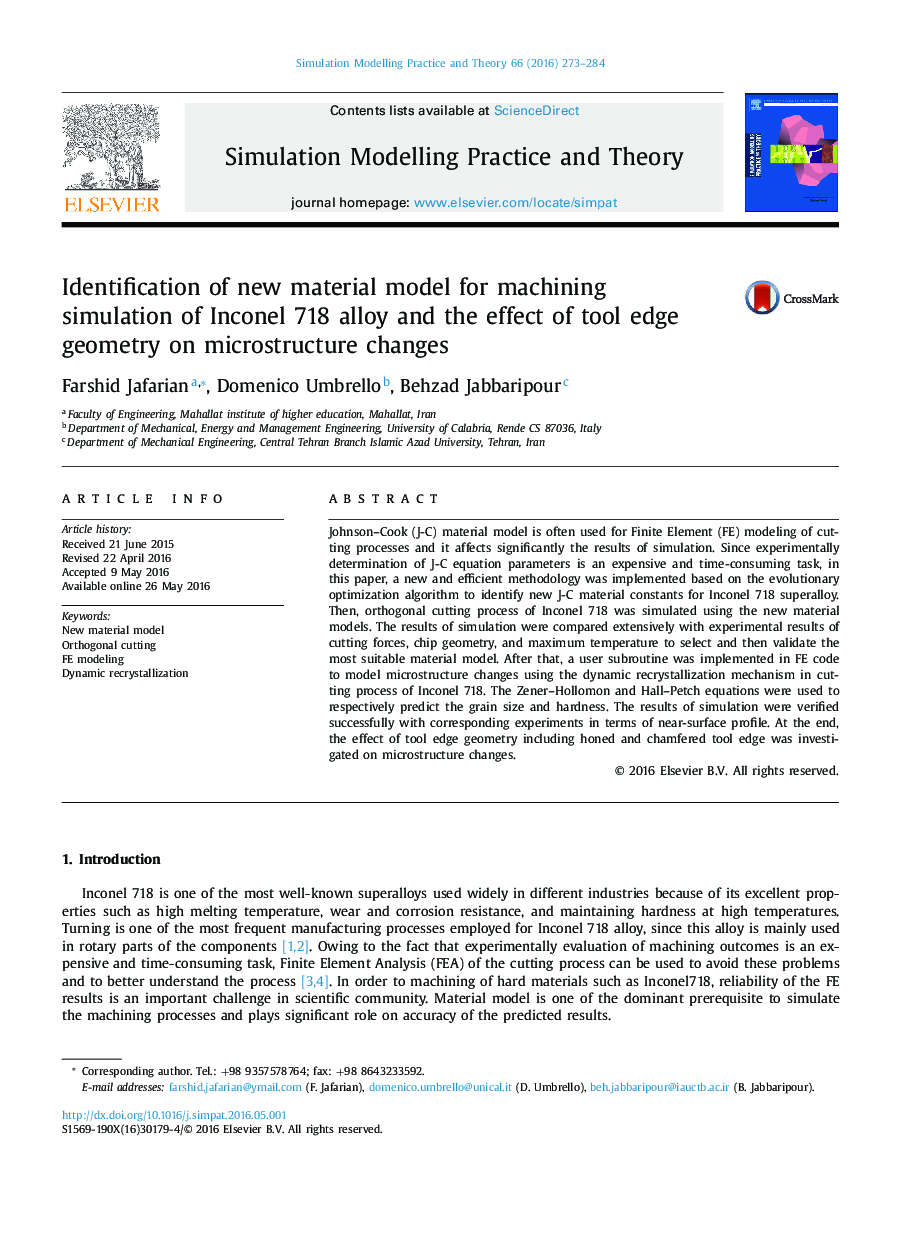| Article ID | Journal | Published Year | Pages | File Type |
|---|---|---|---|---|
| 491707 | Simulation Modelling Practice and Theory | 2016 | 12 Pages |
Johnson–Cook (J-C) material model is often used for Finite Element (FE) modeling of cutting processes and it affects significantly the results of simulation. Since experimentally determination of J-C equation parameters is an expensive and time-consuming task, in this paper, a new and efficient methodology was implemented based on the evolutionary optimization algorithm to identify new J-C material constants for Inconel 718 superalloy. Then, orthogonal cutting process of Inconel 718 was simulated using the new material models. The results of simulation were compared extensively with experimental results of cutting forces, chip geometry, and maximum temperature to select and then validate the most suitable material model. After that, a user subroutine was implemented in FE code to model microstructure changes using the dynamic recrystallization mechanism in cutting process of Inconel 718. The Zener–Hollomon and Hall–Petch equations were used to respectively predict the grain size and hardness. The results of simulation were verified successfully with corresponding experiments in terms of near-surface profile. At the end, the effect of tool edge geometry including honed and chamfered tool edge was investigated on microstructure changes.
